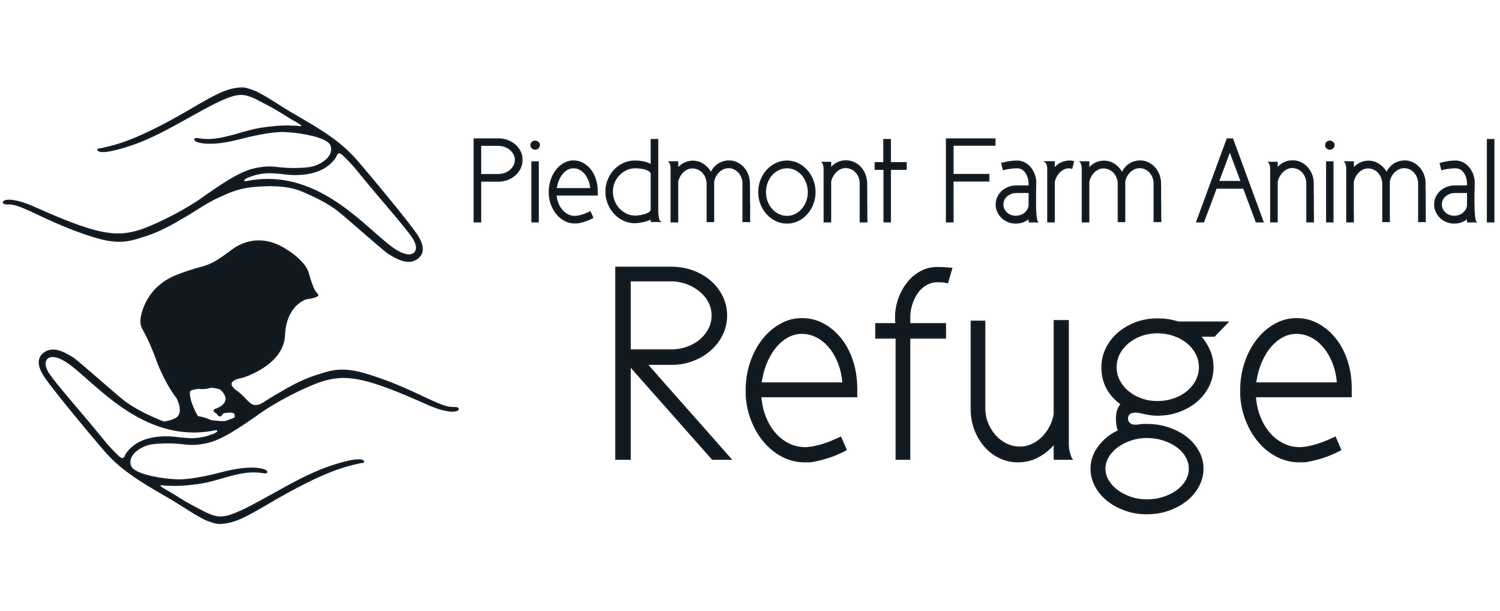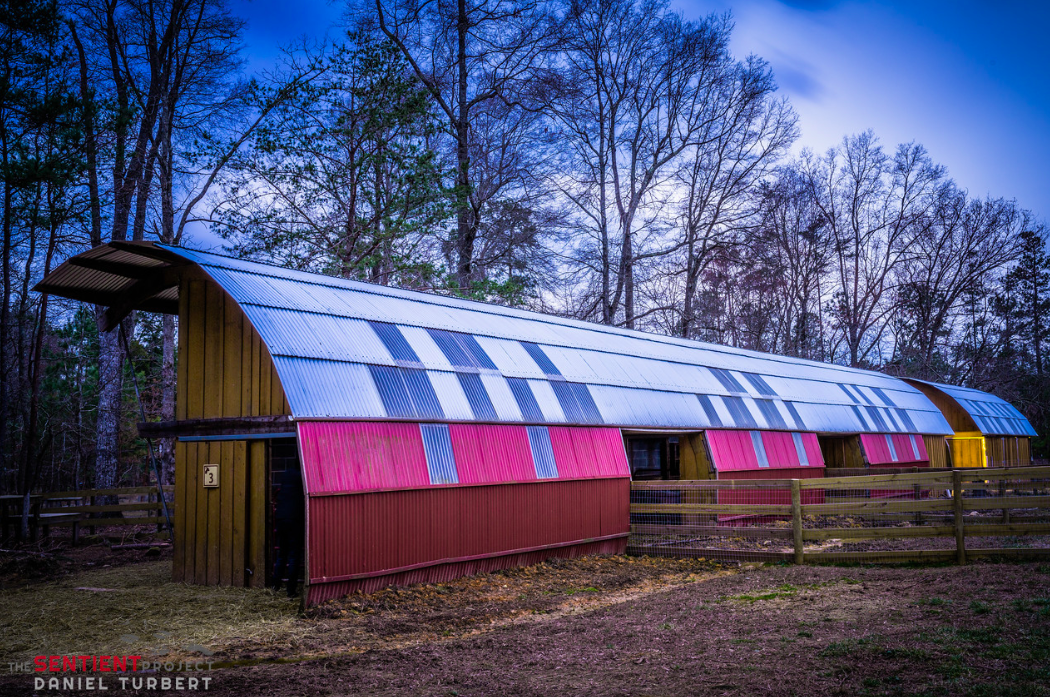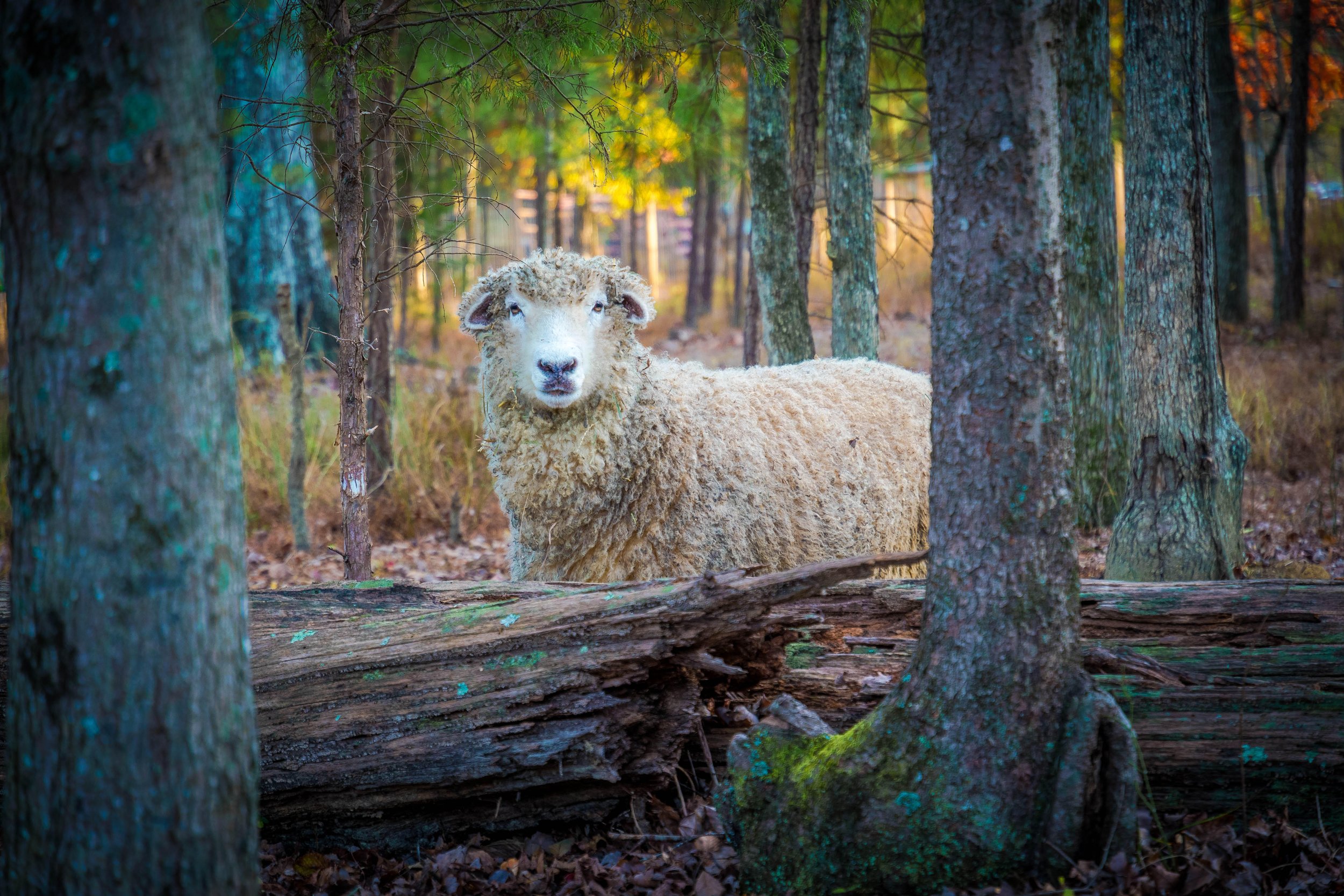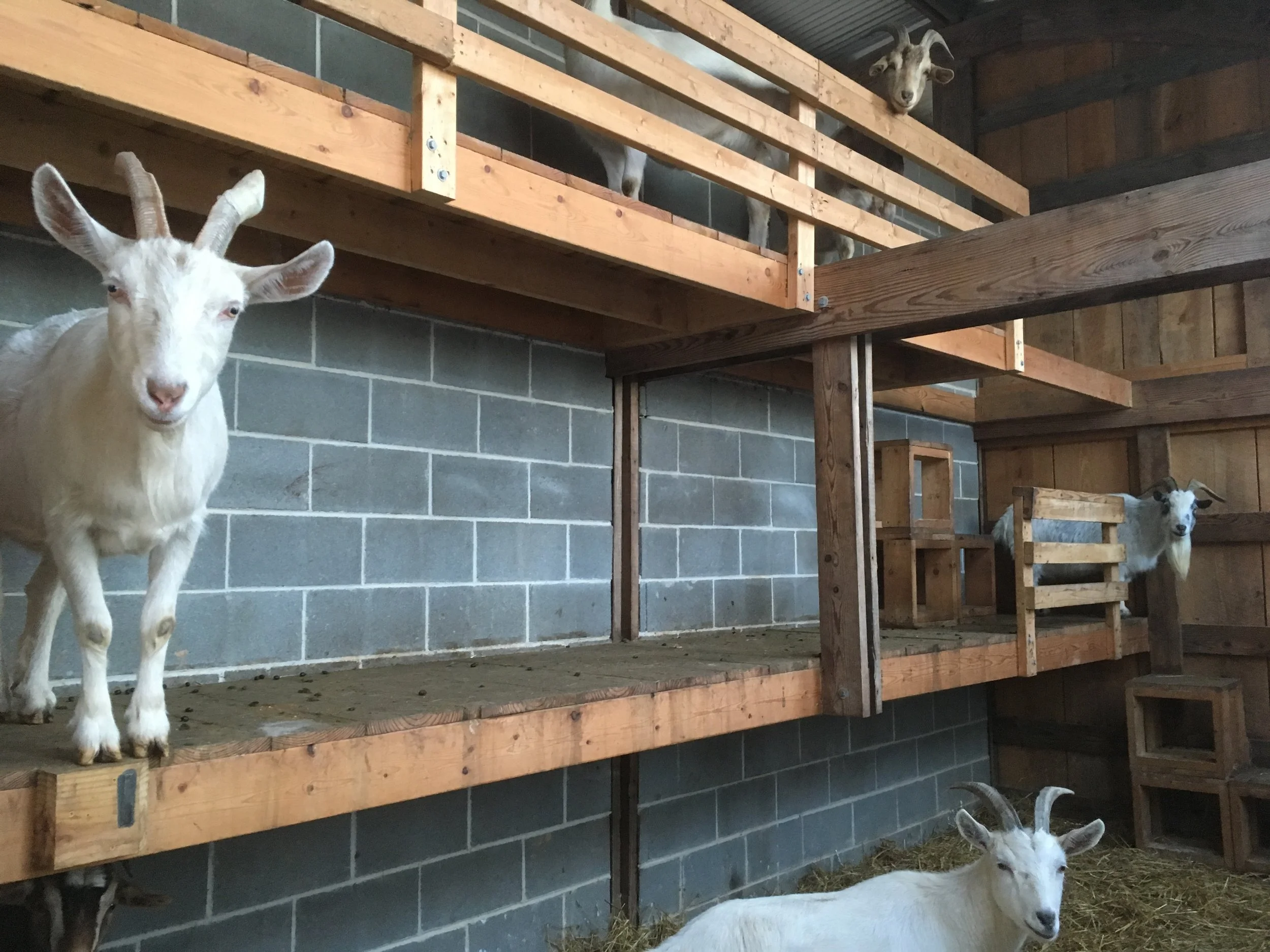Animal-Centered Design
What is Animal-Centered Design?
Farmed animals have traditionally been housed in barns or facilities that were designed with a specific intent: they were spaces that allowed humans to use animals for profit or otherwise benefit from their labor. However, at sanctuaries, animals are recognized as individuals who deserve to live free from exploitation. Our goal is simple: provide a safe and caring environment for animals to live out the rest of their days. With this in mind, sanctuaries now have the freedom to make design decisions based on a new set of principles, where animals come first. This is the origin of animal-centered design.
Through animal-centered design we can move away from traditional farm structures and landscapes and towards spaces that put the needs and wants of the animals in the forefront. Animal-centered design does not have one particular aesthetic or style, but it is instead based on a set of ideas, values, and priorities.
Some of the questions that we ask during the process of animal-centered design include:
Who are the ancestors of these domesticated farmed animals? What kind of habitats do those wild ancestors live in?
What are the needs, wants and desires of the animals? What makes them happy and what makes them feel safe? (As best we can understand.)
How do the animals like to spend their day? What activities do they engage in and how to they interact with their environment?
When members of their species become feral, where do they go and what do they do?
Why is Animal-Centered Design Important?
First and foremost, the goal of animal-centered design is to provide the most comforting and suitable environment possible for the animals in our care. This is the driving force behind this work. Living spaces can have a dramatic impact on quality of life, but this aspect of care can be easily overlooked or undervalued.
It is also important to understand the impact that aesthetic can have on how our society values others. When Refuge visitors see our residents living in structures with specific features and unique designs, it further reinforces that these animals are individuals with individual needs and wants. It also helps to reinforce the values behind our organization and sets us apart from places like small farms or petting zoos. This provides a critical educational experience that can have a lasting effect on how people view farmed animals.
Additionally, the work of sanctuaries and the efforts of animal-centered design can be viewed as a direct response to the dominating way that farmed animals are treated in our society: as commodities who are forced to live in horrific living conditions. The environment of the factory farm is unfortunately where the vast majority of farmed animals find themselves today. Animal-centered design for farmed animals is the antithesis of this model. It centers the individual animal as worthy in their own right to life, happiness and safety.
Learn More
Learn about the documentary being made about our Animal-Centered Design work: https://www.foreverhome.love/
Listen to our webinar presentation for the Global Federation of Animal Sanctuaries: https://sanctuaryfederation.org/webinars/introduction-to-animal-centered-design/
Listen to our interview on Our Hen House Podcast: https://www.ourhenhouse.org/episode-536-lenore-braford-and-paul-drake-of-piedmont-farm-animal-refuge/
Listen to our interview on Hope for the Animals Podcast: https://hopefortheanimalspodcast.org/episode-62-creating-spaces-for-animals-to-thrive-with-paul-drake-lenore-braford/
Learn about other sanctuaries who engage in Animal-Centered Design: https://opensanctuary.org/breaking-the-mold-how-animal-centered-design-can-transform-sanctuaries/
Learn about the importance of Site Planning using this resource which we created for The Open Sanctuary Project: https://opensanctuary.org/site-planning-at-your-animal-sanctuary/
Have questions or want to share your ideas? Contact us.
Animal Houses at Piedmont Farm Animal Refuge
Some of the core features and basic concepts of the housing at the Refuge are detailed in the below drawings. Click the images to make them larger.












